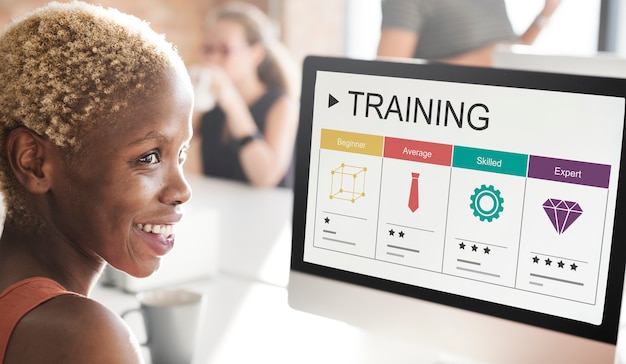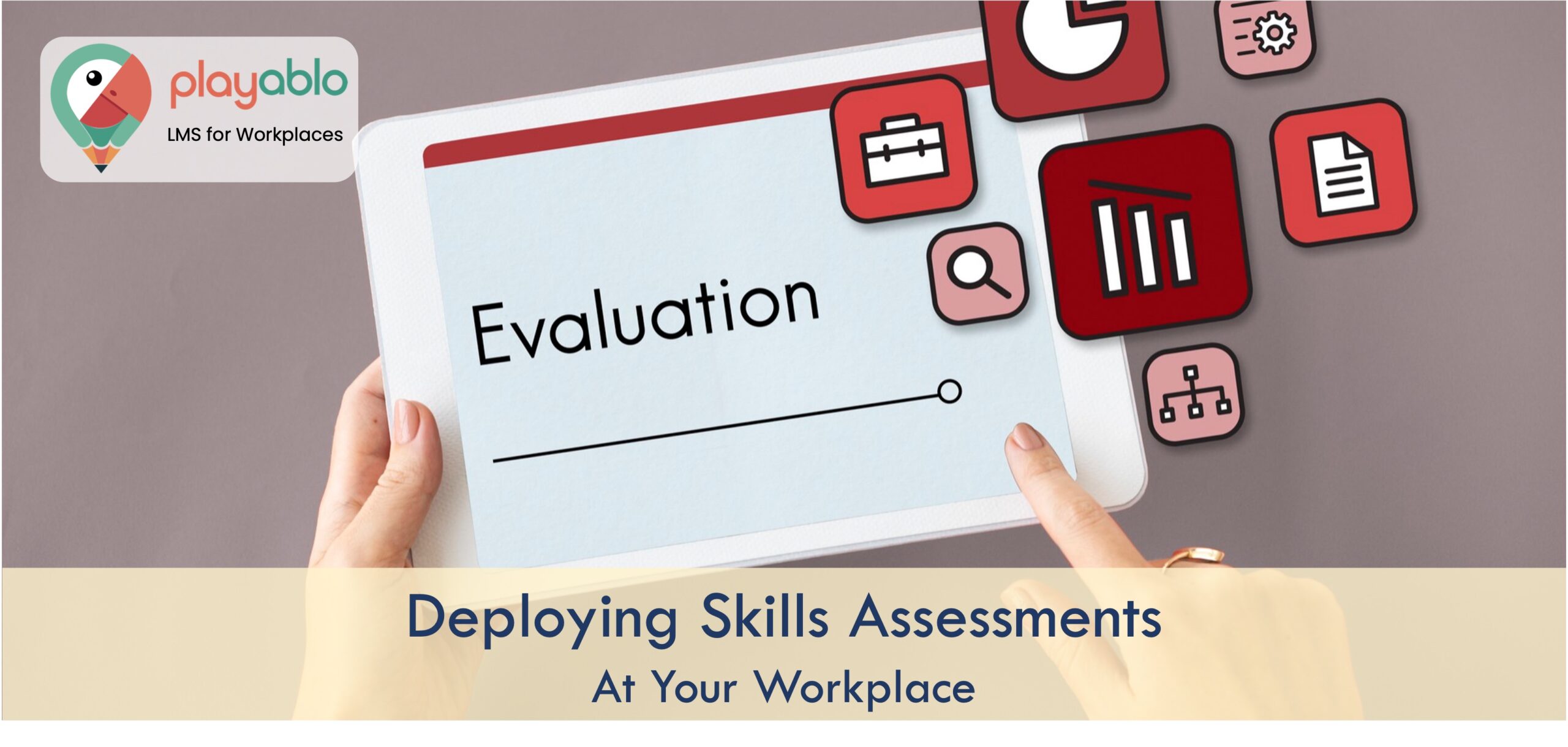Every organization’s most significant asset is unquestionably the abilities and competencies of its workforce. The production and income of the company are directly related to these competencies. The practice of identifying the right individuals with the appropriate skill sets is one that any organization is perpetually engaged in. It is essential to conduct a comprehensive skills assessment before your hiring team delves into the massive pool of potential applicants to grasp the group’s present status. You can then take steps for the team’s future requirements.
Table of Contents
Skills Assessments: Its Definition

Skill assessment is gathering data to assess a person against predetermined criteria to determine their proficiency and capacity to accomplish a wide range of tasks.
Why Use It?
Skills assessments are crucial when selecting candidates for new roles inside the firm, advancing existing employees, and assessing the competencies of current staff. They also aid decision-makers and recruiting managers to narrow the pool of deserving applicants for job vacancies. A team that is flexible and willing to advance is crucial in a workplace that is constantly evolving.
The Value of Skills Assessments
Assessments of skills and competencies are an inherent aspect of training. However, according to LinkedIn’s 2021 Workplace Learning Report, they are not occurring as frequently as they ought to. Just 30% of learning and development (L&D) specialists worldwide claim to use assessments in training. Skills assessments are equally essential, even though strategies like role-playing or practical projects can also be employed to determine knowledge and abilities.
You should carry out real-time skills assessmentswhile receiving instruction. When using a digital learning platform intended for learning and training, employers can pick from various assessment alternatives with multiple question types, which helps instructors reiterate the correct information. As soon as learners “submit” their answers, the trainer receives the outcomes of the evaluation. This provides prompt acknowledgment and clarifies inaccurate information during a session.

A great training program must also include an evaluation procedure. LinkedIn’s 2021 Workplace Learning Report indicates that assessments increased by 11 points between 2020 and 2021. Even so, only 27% of respondents confirmed using evaluations in this study. Examining the engagement metrics from the actual training course is another method for assessing the effectiveness of the training. There is no bias because these analyses are impartial. The efficacy of the instruction increases with increased engagement.
Since both the instructor and the learner have a stake in demonstrating a successful outcome from learning, prejudice from both parties must often be considered in skills assessment reviews. According to a piece in the Harvard Business Review, “Today’s employees often signal through continuous professional education (CPE) credits so that they can make a case for a promotion. L&D staff also signal their worth by meeting flawed KPIs, such as the total CPE credits employees earn, rather than focusing on the business impact created. The former is easier to measure, but flawed incentives beget flawed outcomes.”
It is crucial to have a skills assessment tool built into the learning system to complete reviews before learners exit the training program and compare them to the statistical analytics-captured objective results.
Trainers can design better lessons and ascertain the training’s strategic value when they have the opportunity to examine quantitative engagement around participants’ involvement and activities during the training. Relevant information is presented from both a trainer’s and a participant’s point of view by learning systems that employ learning, behavior, and performance analytics dashboards. By using qualitative data, such insight generates quantifiable results that help enhance training programs.
Let’s examine two sorts of skills assessments: pre-employment testing and evaluation of the current workforce.
Advantages of Testing the Current Workforce

For the current workforce, skill tests have several advantages. For instance:
- They give a precise picture of workers’ knowledge and abilities, which can assist in identifying skill gaps.
- Training managers can develop targeted training plans that address skill gaps inside the team or the entire business with a thorough study.
- Training managers or decision-makers can approach cooperating partners and introduce new projects using the skills assessment results.
- Decision-makers can deploy the proper resources to the appropriate projects using the findings of skills assessments.
- Skills assessments provide you with the assurance that every member of your team has the fundamental abilities required to start new tasks.
- They assist workers in determining the competencies required to advance their careers.
- They support workers in becoming productive team players.
Create a skills matrix for understanding the value of individual talents as well as the competencies of current employees to start realizing these advantages. These elements are crucial in establishing how sustainable a given organization is.
Skills assessments are now dependable, inexpensive, and user-friendly owing to continually developing high-tech innovations. Microsoft’s 2021 Work Trend Index research also offers comprehensive insights that are advantageous to both the organization and the personnel.
Pre-employment Assessment Advantages
Pre-employment examinations assist recruiting and training supervisors in sifting through a sea of applicants to find the most qualified for unfilled positions. Assessments of a candidate’s cognitive capacity, intelligence quotient (IQ), conversational fluency, emotional intelligence quotient (EQ), technical capabilities, and soft skills may be part of these examinations.
Pre-employment evaluations have been embraced by several Fortune 500 firms, which has successfully improved the caliber and variety of their field of candidates. Pre-employment testing shouldn’t be disregarded as a crucial step in the recruitment procedure.
Time-saving
An open position may not be filled for up to 45 days, and each interview lasts approximately 40 minutes. What else? According to the Work Institute’s 2020 Retention Study, two-thirds of workers and 37.9% of prospects who were hired left their jobs within the initial six months of their employment. That is a lot of wasted effort.
Pre-employment skills assessments streamline the hiring procedure and increase the likelihood of locating the ideal employee, ultimately saving time. The same Work Institute analysis claims that the U.S. lost more than $630 billion due to attrition alone. Additionally, team productivity and hence income is directly impacted by turnover.
Checking Skills
According to a survey by Criteria Pre-Employment Testing, 46% of resumes are false, rendering them unreliable. Pre-employment exams not only help you evaluate an applicant’s fundamental talents but also show you if the capabilities mentioned on their profile are accurate and whether their actual technical skills correspond to what is required for the position. This approach raises productivity, cuts down on employee turnover, and improves performance.
Zero Bias
Removing prejudice from the hiring and evaluation procedures is among the most significant benefits of employing skills assessments. An impartial, in-depth analysis of an existing or potential worker’s talents will be provided by the evidence-based information taken after completing an evaluation.
Organizations are gathering increasing data about their employees, including evaluations of their present skills and abilities and tests of their capacity to pick up new talents. Companies may succeed at hiring, deploying, growing, and retaining individuals if they have a practical skills evaluation system.
Now that you know the advantages of skills assessments, are you prepared to introduce skills evaluations into your company? Let’s help you get started with these six practical tips.
Ad: PlayAblo’s Enterprise-Grade Micro-Learning platform is built for millennial learners. Micro-Learning and assessments and gamification features ensure learning outcome measurement and sustained engagement.
Find out more and request a custom demo!
6 Smart Tips to Introduce Skills Assessments in Your Firm

Test Hard and Soft Skills Alike
When performing skills assessments, evaluating hard and soft talents is crucial. This is because both kinds are essential at work. For instance, a corporate student who repairs equipment may be highly knowledgeable about it, but they could not be capable of effectively engaging with customers to solve frequent problems. Typically, technical expertise is directly tied to a particular industry or profession.
In contrast, a soft skill enables someone to interact with others, communicate with them, and work together. As they allow them to connect with a digital world and characters that may evaluate their comprehension of nonverbal cues, emotions, and actions, simulations are among the best instruments for evaluating both skills.
Ensure That You Are Concentrating on Job-specific Talents
Try to emphasize skills assessments focused on professional responsibilities and daily tasks instead of assessing general skills that each employee should be familiar with. In essence, you would like to focus on abilities that are significant and directly impact how well they do at work. By observing people on the job, discussing with their superiors, and conducting research, you can determine which talents are actually crucial.
Find the Best Testing Strategy
It would help if you decided how to efficiently analyze the core talents after determining which ones need to be evaluated. While you can evaluate some abilities through written tests, others could call for a more original strategy. Assess skills that might not have a reliable grading rubric using online situations and games. For instance, you might use employee decision-making and path-choosing tasks evaluate employees’ problem-solving and customer service abilities.
Favorable or unfavorable outcomes from their decisions will show them if they need to develop particular competencies. This is still another factor in the importance of audience research since it allows you to discover as much as you can about the interests of your workers. You can create responsive tests which automatically alter to meet the screen resolution if customers want mobile-friendly evaluations, for example.
Ad: PlayAblo’s Enterprise-Grade Micro-Learning platform is built for millennial learners. Micro-Learning and assessments and gamification features ensure learning outcome measurement and sustained engagement.
Find out more and request a custom demo!
Make Each Evaluation Unique

Skills assessments shouldn’t have a “one size fits all” philosophy. Each employee should receive an individual evaluation based on their requirements, interests, and role within the organization. At the absolute least, each division in your company should establish its own skills assessments. Instead of evaluating skill sets that can be obsolete, you can test talents that are connected to employees’ job performance.
An IT professional does not necessarily need to learn how to bargain with a client, just as a salesperson does not necessarily need to understand how to fix a laptop. Individualized skills assessments help your digital training program be more valuable since it enables individuals to connect to the material and comprehend why the evaluation is necessary. Otherwise, they can wonder if the testing would genuinely help them enhance their work efficiency and accomplish their objectives. As a result, individuals won’t be as inclined to engage fully and proactively in the talent evaluation process.
Offer Testing Resources
Give your staff a chance to polish their competencies by offering digital testing tools at work rather than requiring them to undertake a skills exam without notification. Examples are a tutorial focused on a specific activity or simulations with characters and obstacles they must conquer. Additionally, you ought to provide them with the identical resources, tools, or technologies that they would utilize in the actual world throughout skills assessments.
For example, if your staff members can often find information in a workshop manual, allow them to consult it during skills assessment tests. Remember that a skills assessment’s primary objective is to evaluate a candidate’s real-world core competencies and talents. Therefore, the skills evaluation must simulate surroundings and problems from the physical world.
Consider Self-evaluations
As they advance through their training courses, your corporate trainees can use a set of self-assessments you’ve created to gauge their proficiency. You may also want to assemble a list of materials, break them down by skill category, and include publications, eLearning films, and sites. Your professional learners can then use such online tools to review necessary skills or prepare for self-assessments.
One idea is to avoid mandating these self-evaluations because intrinsic motivation will increase learning in corporate trainees. In light of this, you ought to provide them with added assistance if they believe they require it. Such tools include forums, mentorship, or virtual learning programs that will help them acquire the necessary abilities.
Conclusion
Finally, utilize the best vendor to create excellent simulation training. You can locate, select, and compare leading eLearning platforms that offer skills assessments as a part of their offerings. By conducting regular skills assessments, your business may tailor its online training program to the changing demands of its workforce. Use these guidelines to create your next e-learning course and conduct a successful skills evaluation.
Ad: PlayAblo’s Enterprise-Grade Micro-Learning platform is built for millennial learners. Micro-Learning and assessments and gamification features ensure learning outcome measurement and sustained engagement.
Find out more and request a custom demo!







Comments are closed, but trackbacks and pingbacks are open.